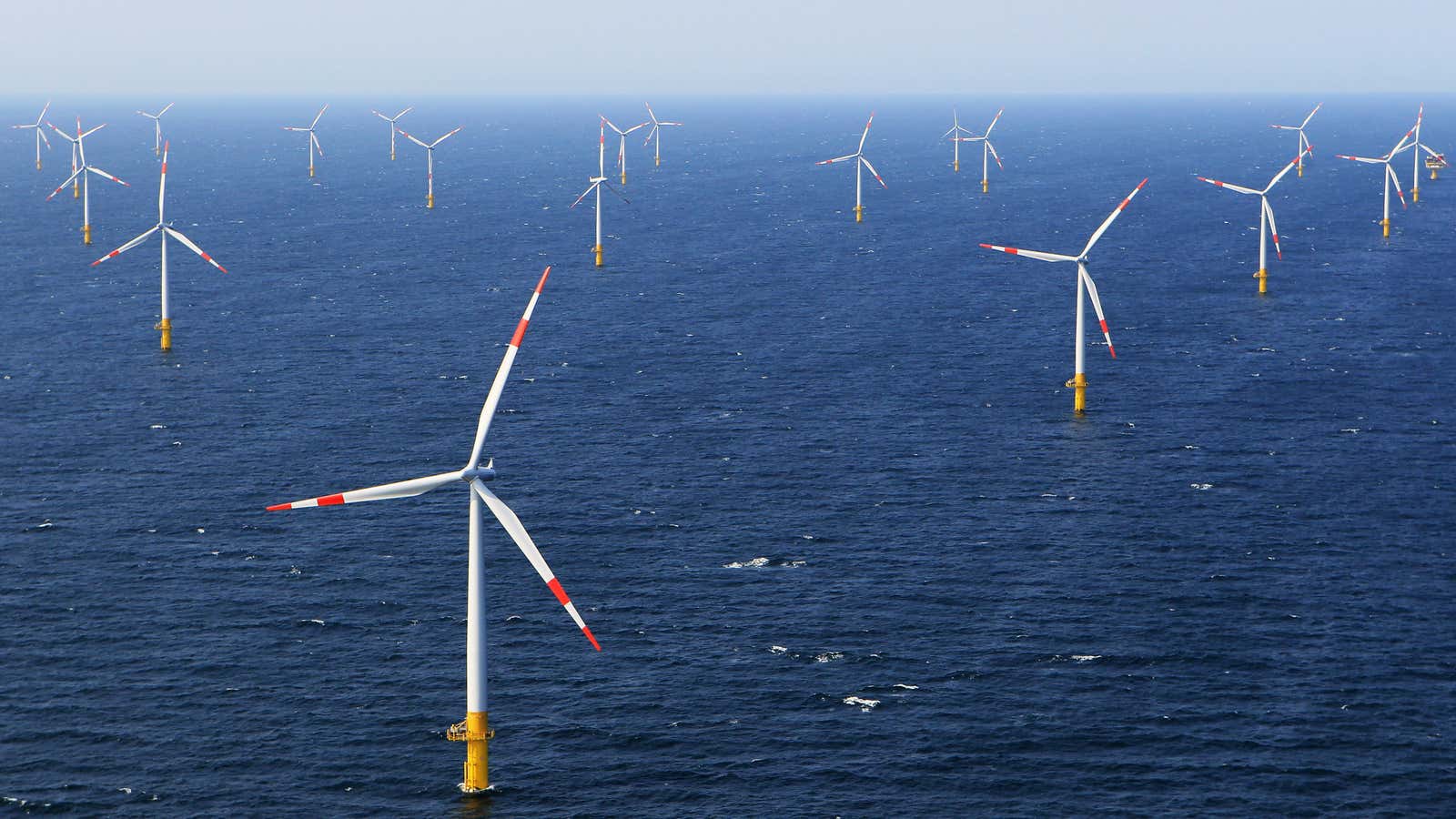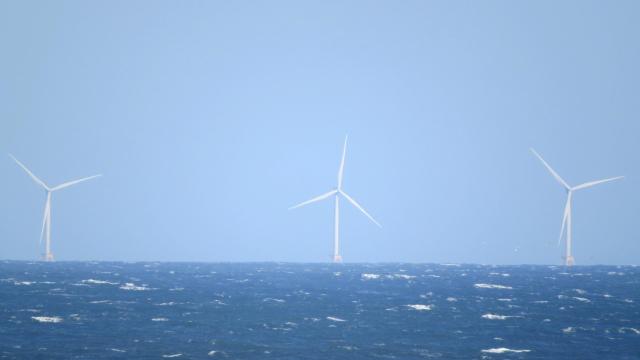The Biden Administration received record-setting bids on its first offshore wind lease sale this week, a promising sign showing U.S. money makers are ready to invest heavily in the long hyped but underdelivered renewable energy source.
On Wednesday the Bureau of Ocean Energy Management held bids for development rights off the coast of New York and New Jersey exceeding $US1.5 ($2) billion, easily eclipsing the last largest $US405m bid held in 2018, according to Al Jazeera. Maybe more impressively, bids on the six offshore leases Wednesday far surpassed money spent on recent oil and natural gas leases approved by the Biden administration last year. In that case, 33 companies reportedly submitted around 317 bids which in total came out to over $US191 ($265) million.
All of this is potentially good news for wind power generally, which made up about 26% of U.S. renewable energy consumption in 2020 according to the U.S. Energy Information Administration. In total, around 14 companies bid against each other for over 488,000 acres of land this week.
The #NYBight auction allows developers to bid on six lease areas: the most ever offered in a single auction. As #offshorewind technology advances, these areas may have the potential to produce even more clean energy than originally predicted. https://t.co/HBQko1aDCY pic.twitter.com/miGnGnYbiJ
— Bureau of Ocean Energy Management (@BOEM) February 23, 2022
These offshore wind farms have the potential to generate a serious amount of energy. The largest section of land on sale during the lease, around 114 acres, could reportedly generate enough energy to power 485,000 homes. When fully operational, officials believe wind generated from the site could be capable of powering up to two million homes.
The pricey sales likely came as a relief to the Biden administration which has bet big on offshore wind for its long-term climate strategy. Back in March 2021, the administration set an ambitious goal of obtaining 30 gigawatts of electricity from offshore wind farms by 2030. Despite years of efforts to get offshore wind turbines up and running, the rollout has been painfully slow. Prior to Wednesday’s auction, the U.S. had just two offshore wind facilities — one off of Rhode Island’s coast and another off Virginia — for the entire country. To put that into perspective, the U.S. had just seven turbines operating in the sea last year.

If all goes according to plan (which, of course, is always a big if) BOEM anticipates the leases bid on this week could generate around five gigawatts of energy by 2035. New York and New Jersey combined have set overall targets of building 16 gigawatts worth of offshore wind within that same time frame. Other states, mostly along the Northeast, have set similar targets as well. Those figures make Biden’s national 30 gigawatt goal appear reassuringly within reach.
Construction began on New York’s first offshore wind farm located off the coast of Long Island last week. That facility, part of The South Fork Wind project, could produce up to 130,000 megawatts of power when it’s completed in 2023, The Verge notes. The energy companies behind that facility meanwhile are reportedly set to begin construction on another, even larger, project next year called Sunrise Wind, capable of generating 924 megawatts of power.
The wind farms aren’t without their detractors though. Last year, for instance, fishermen in Maine formed a flotilla to protest the construction of a turbine around two miles offshore, claiming a large cable running along the ocean floor could disrupt lobster fishing in the area. Meanwhile, back in New York, a group of rich property owners in the notoriously posh Hamptons’ seaside community filed a lawsuit attempting to block key infrastructure needed to develop a wind farm located off of Long Island’s coast. Their suit warned of potential soil erosion and health impacts though critics say both are negligible compared to the benefits afforded by added renewable energy.
Those hiccups aside, offshore wind looks like it’s finally moving forward in a meaningful way. Worldwide, the International Energy Agency expects offshore wind capacity will increase by 15 times by 2040 and receive cumulative investments of over $US1 ($1.39) trillion dollars.
